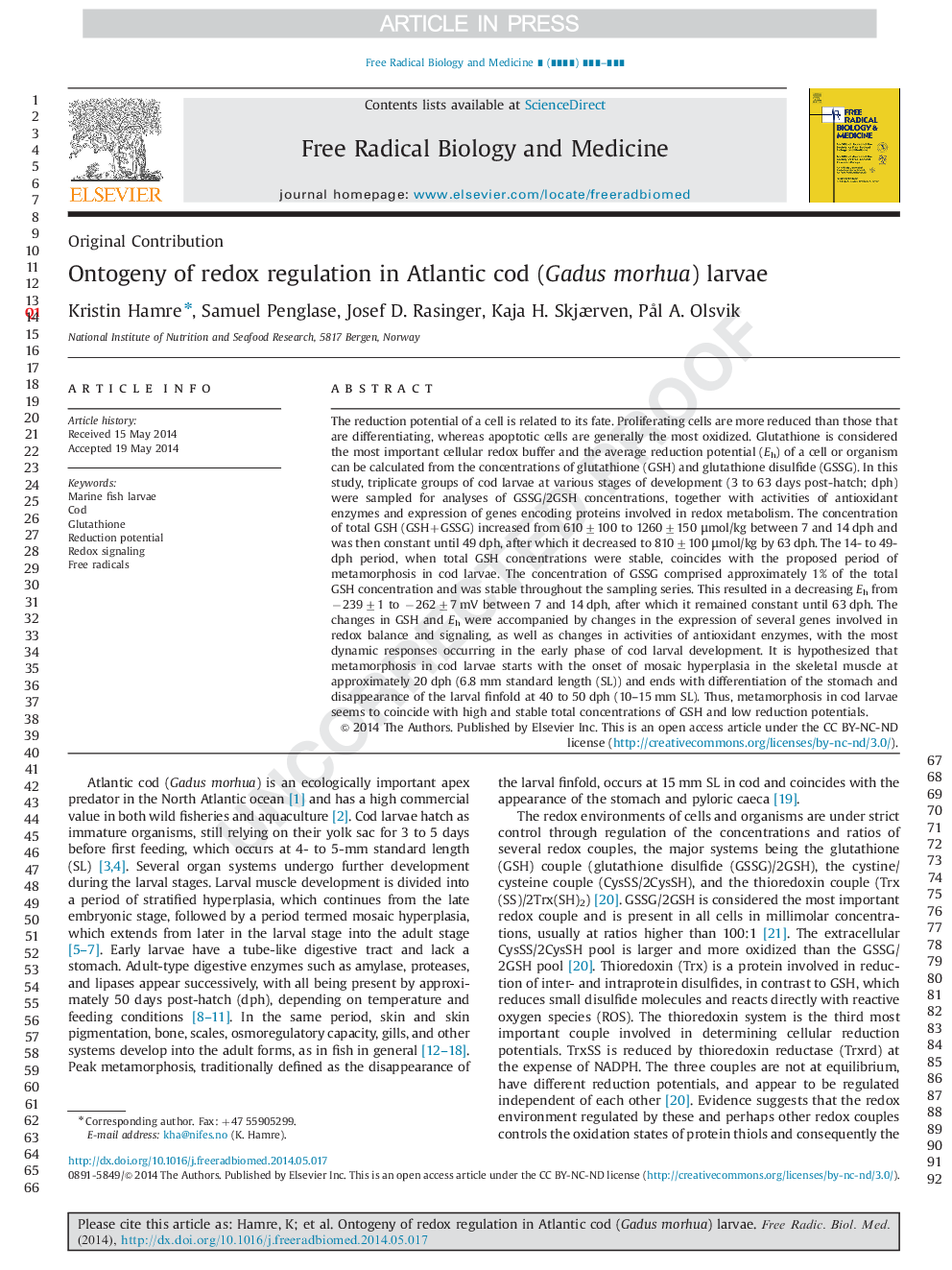| Article ID | Journal | Published Year | Pages | File Type |
|---|---|---|---|---|
| 8270398 | Free Radical Biology and Medicine | 2014 | 12 Pages |
Abstract
The reduction potential of a cell is related to its fate. Proliferating cells are more reduced than those that are differentiating, whereas apoptotic cells are generally the most oxidized. Glutathione is considered the most important cellular redox buffer and the average reduction potential (Eh) of a cell or organism can be calculated from the concentrations of glutathione (GSH) and glutathione disulfide (GSSG). In this study, triplicate groups of cod larvae at various stages of development (3 to 63 days post-hatch; dph) were sampled for analyses of GSSG/2GSH concentrations, together with activities of antioxidant enzymes and expression of genes encoding proteins involved in redox metabolism. The concentration of total GSH (GSH+GSSG) increased from 610±100 to 1260±150 μmol/kg between 7 and 14 dph and was then constant until 49 dph, after which it decreased to 810±100 μmol/kg by 63 dph. The 14- to 49-dph period, when total GSH concentrations were stable, coincides with the proposed period of metamorphosis in cod larvae. The concentration of GSSG comprised approximately 1% of the total GSH concentration and was stable throughout the sampling series. This resulted in a decreasing Eh from â239±1 to â262±7 mV between 7 and 14 dph, after which it remained constant until 63 dph. The changes in GSH and Eh were accompanied by changes in the expression of several genes involved in redox balance and signaling, as well as changes in activities of antioxidant enzymes, with the most dynamic responses occurring in the early phase of cod larval development. It is hypothesized that metamorphosis in cod larvae starts with the onset of mosaic hyperplasia in the skeletal muscle at approximately 20 dph (6.8 mm standard length (SL)) and ends with differentiation of the stomach and disappearance of the larval finfold at 40 to 50 dph (10-15 mm SL). Thus, metamorphosis in cod larvae seems to coincide with high and stable total concentrations of GSH.
Related Topics
Life Sciences
Biochemistry, Genetics and Molecular Biology
Ageing
Authors
Kristin Hamre, Samuel J. Penglase, Josef D. Rasinger, Kaja H. Skjærven, Pål A. Olsvik,
